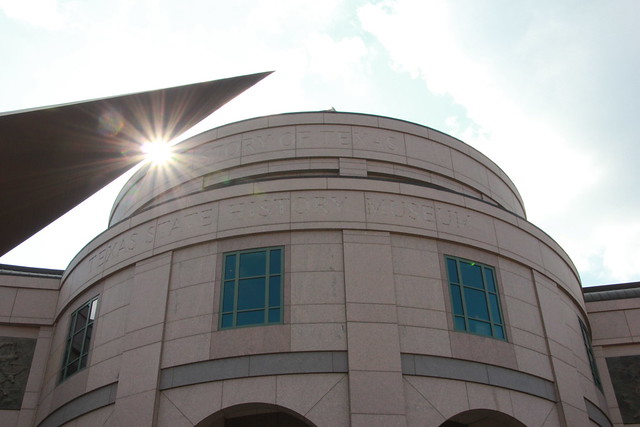
So this one time, I took the kids to learn about the History of the State of Texas at the Bullock Museum.

I really liked the tile mosaic on the floor of the entrance. It looks just like a campfire.
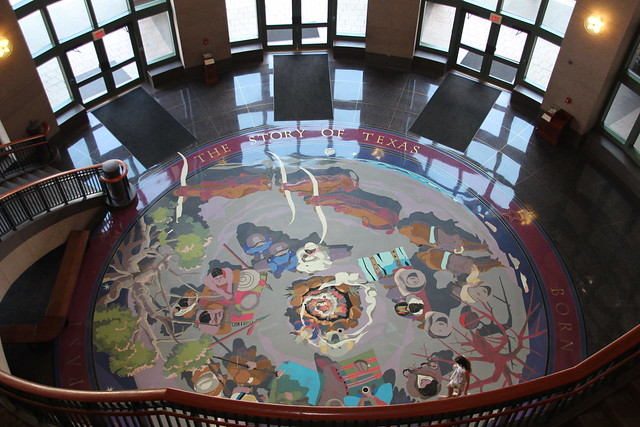
One of the main exhibits at the museum is dedicated to La Belle, a 17th century ship that was sailed by explorer Rene-Robert Cavelier, Sieur de la Salle, from France to America, where it sank in Matagorda Bay. In 1996, the ship was found, and archaeologists have brought it up, and are reassembling it inside the museum.

Connor was very excited to have found bronze cannons from the ship. We had previously watched a documentary about a modern treasure hunter who was searching for bronze cannons from the 17th century.

For contrast, this is a regular iron cannon:

Here is a model of La Belle:

There was a man busy reconstructing the hull while we were there:


We also watched a 4D movie about the true story of one of the survivors from La Salle and their life in the new world.

This is the Nobel Prize of Physics that was awarded to Jack Kilby of Texas Instruments in 2000, recognizing that his invention of the first integrated circuits in 1958 was the beginning of the information age, and these are some of his early circuits.
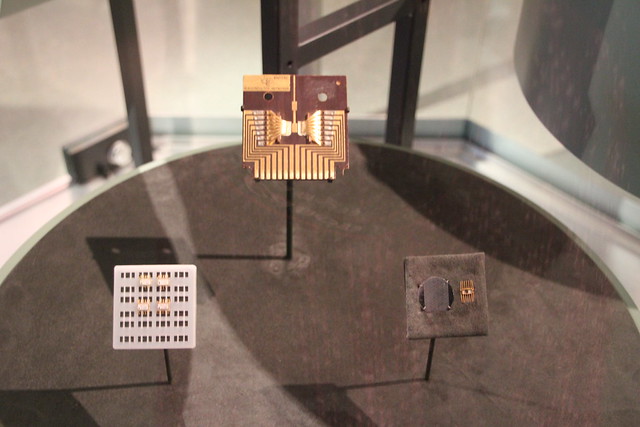
Of course, the Story of Texas would not be complete without an exhibit dedicated to NASA.

This miniature Texas flag went to the moon on the Apollo 17 mission, along with a piece of a moon rock.
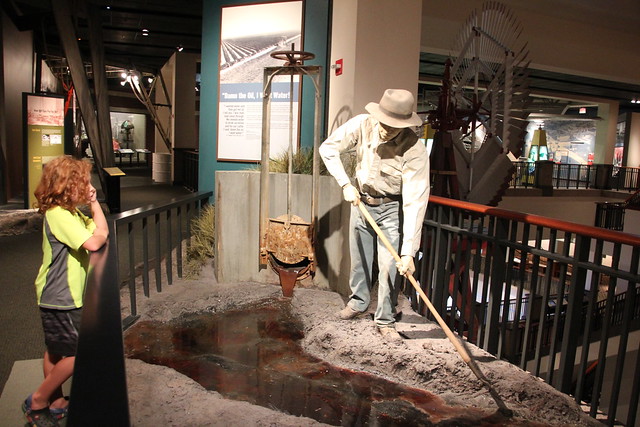
"Damn the Oil, I Want Water!"

Texas Windmill: A wind-powered water pumping machine that was invented in 1854, and allowed the settlement of areas otherwise without water. You know, where we live. There are still windmills in a ton of fields where we live, and they are used to provide water for fields of cattle. So, in a way, windmills = steaks.
This is the original Goddess of Liberty from 1888. It used to be on top of the Texas Capitol Building, but now it is here, and an exact replica is atop the Capitol presently. The statue is 16 feet tall, and is a likeness of Athena.

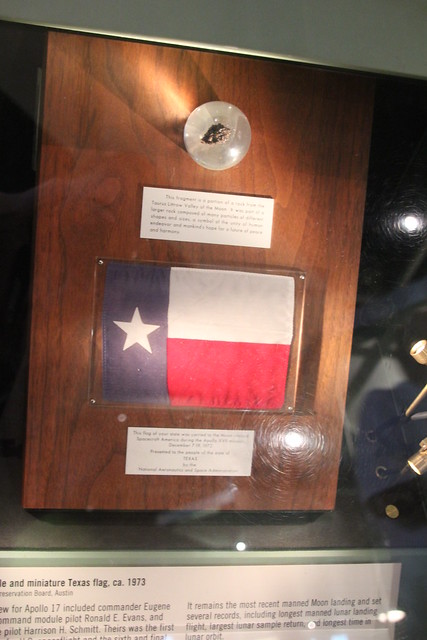
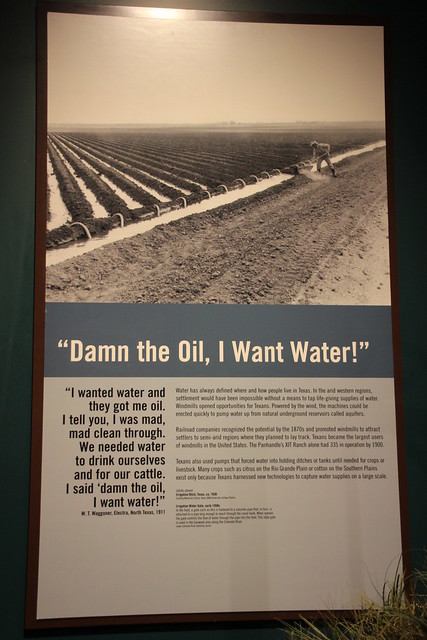
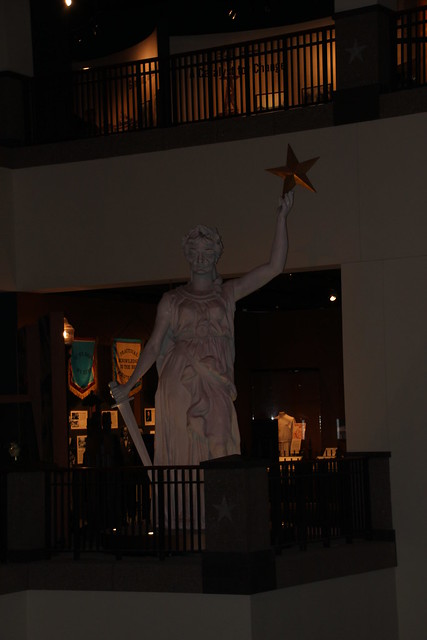
No comments:
Post a Comment